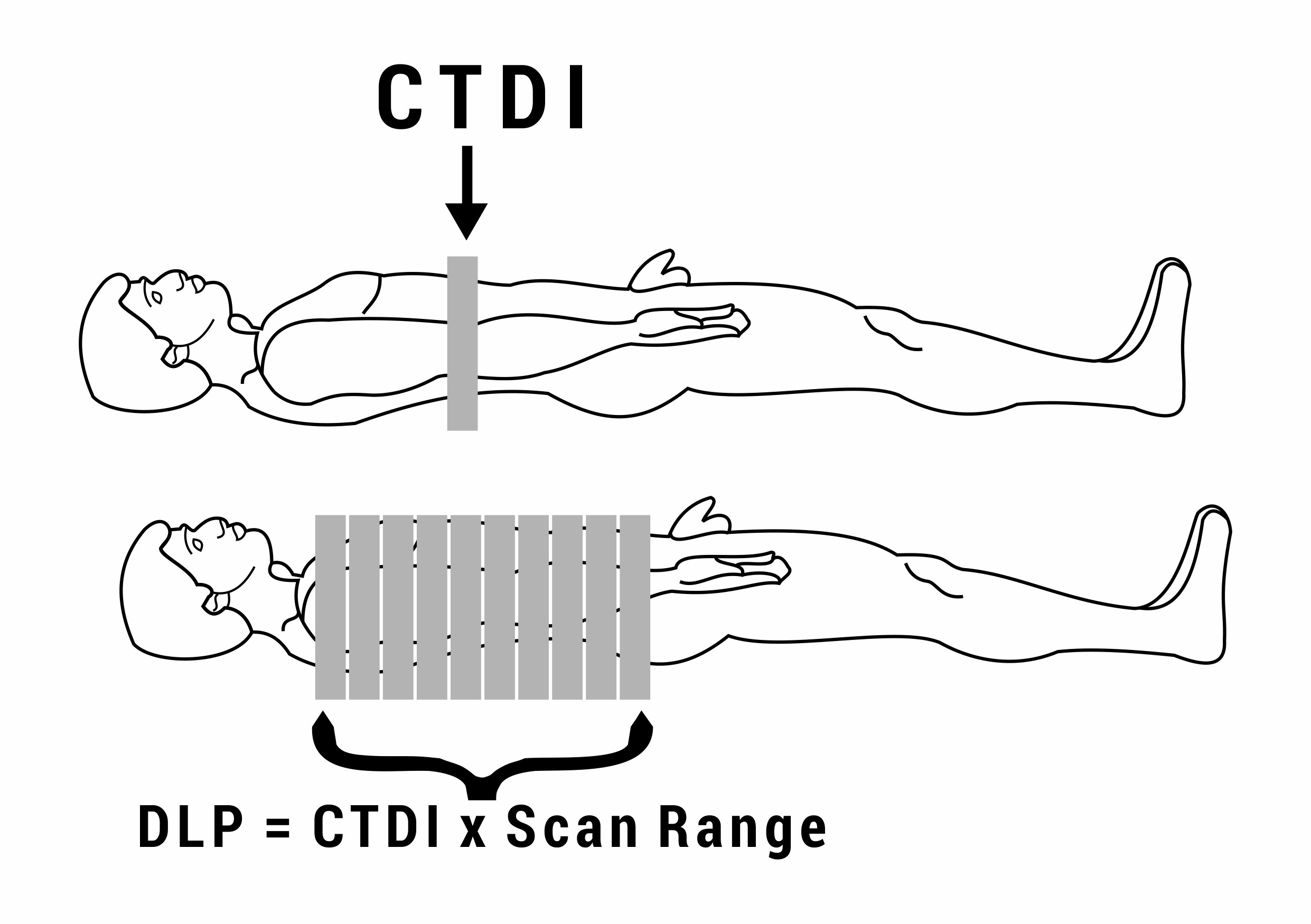Explain CTDI, its different forms and how it is measured?
The theory
The computed tomography dose index (CTDI) is a measure of the radiation output of a CT scanner (typically in a standard acrylic phantom, but sometimes reported in air). It is important to note that this is NOT a measure of patient dose. It is a measurement of the average radiation output in a standard phantom as a consequence of the selected technique factors. The technique factors that affect CTDI are X-ray tube voltage (kVp), X-ray tube current (mA), X-ray tube rotation time (s) and CT Pitch (P). The most common ways of reporting CTDI are the CTDI100, CTDIw or CTDIvol.
CTDI100 is a measurement of dose integrated over a 100 mm ionisation chamber (also known as a pencil chamber). This measurement is taken with a stationary table and represents the average dose over that chamber within the selected field of view. This measurement can be made in the air or in a phantom, and typically the location or material is specified. For example, CTDI100,air for measurements taken in air, CTDI100,c and CTDI100,p for measurements taken at the centre of a CTDI phantom or 10mm below the surface of the phantom respectively.
CTDIw is derived from CTDI100 to account for the topographic variations in the human body. For example, the dose absorbed at the surface of the patient will be different to that which is absorbed in a depth within the patient. However, both these values contribute to the average dose output to the patient in that field of view. Measurements are taken with the pencil chamber in a standard CT phantom in a central location and then in peripheral areas. The dose from the pencil chamber is weighted accordingly by the following equation:
CTDIw = ⅓ CTDI100,c + ⅔ CTDI100,p
The limitation of CTDIw is that it only considers the dose in each axial acquisition slice without accounting for overlaps or gaps in the dose due to increments in table movement in helical scans.
CTDIvol is the value most commonly used on all modern CT scanners. It considers the average dose over the entirety of the scan protocol rather than only at one particular axial acquisition slice as above. The measurement will be the average dose within 100mm chamber in a standard phantom through the entire scan length. This value takes into account any gaps or overlaps (controlled by the pitch) in the series of scan acquisitions.
Two sizes of standard CT phantoms are available: 16 cm head phantom and 32 cm body phantom. One of the limitations of all CTDI methodologies is that it averages the dose within the 100mm chamber over the entirety of the scan. The average scan will cover more than 100 mm, so the dose deposited in the volume will need to account for the length of the scan. This resulted in the introduction of the Dose Length Product (DLP). In simple terms, the DLP is just the CTDIvol x Scan length (Figure 1). Although this value represents the total radiation dose incident on the patient, it still can not be used as the patient dose. To estimate organ doses, CTDIvol can be used with conversion factors and to estimate patient effective dose DLP can be used with published k factors. The topic of the patient dose will be discussed in another post.

Figure 1 – The CTDI is the average radiation intensity incident upon the patient. The DLP is the CTDI multiplied by the scan range and signifies the total radiation output incident on the patient.
The question
Explain CTDI and its different forms and how it is measured?
In this question it is important to address three things:
- What is CTDI?
- What are the different types?
- How is it measured?
Gauging the number of marks the question is worth will give a rough idea of how many types of CTDI should be discussed. For example, if the question is worth six marks, giving a definition of 3 CTDI values (for three marks) and explaining how each is measured (for three marks) is appropriate.
The first sentence in the response should be a basic definition of CTDI. For example, “CTDI, or CT dose index, is a standardised measurement of the radiation output of a CT scanner.”
Secondly, we must address the three different type of CTDI and how they are measured. The sentence structure should be, “CTDI(type1) is ______. This is measured by _____. Another form of CTDI is the CTDI(type2) which is ______. This is measured by _____. Lastly, CTDI CTDI(type3) is ______. This is measured by _____.”
Sample answer
Explain CTDI and its different forms and how it is measured? (2 marks)
CTDI, or CT dose index, is a standardised measurement of the radiation output of a CT scanner. CTDI100 is a measurement of radiation output integrated over a 100 mm dose chamber. This is measured using a pencil chamber either in the air or in a phantom in an axial scan. CTDIw is the measurement of radiation output weighted for the dose relationship at different depth in the human body. This is measured by weighting the CTDI100 measured at the periphery (10 mm below the surface) of a patient equivalent phantom and the centre of a patient phantom.
Did you find this useful or would you answer this question any differently? Comment below.